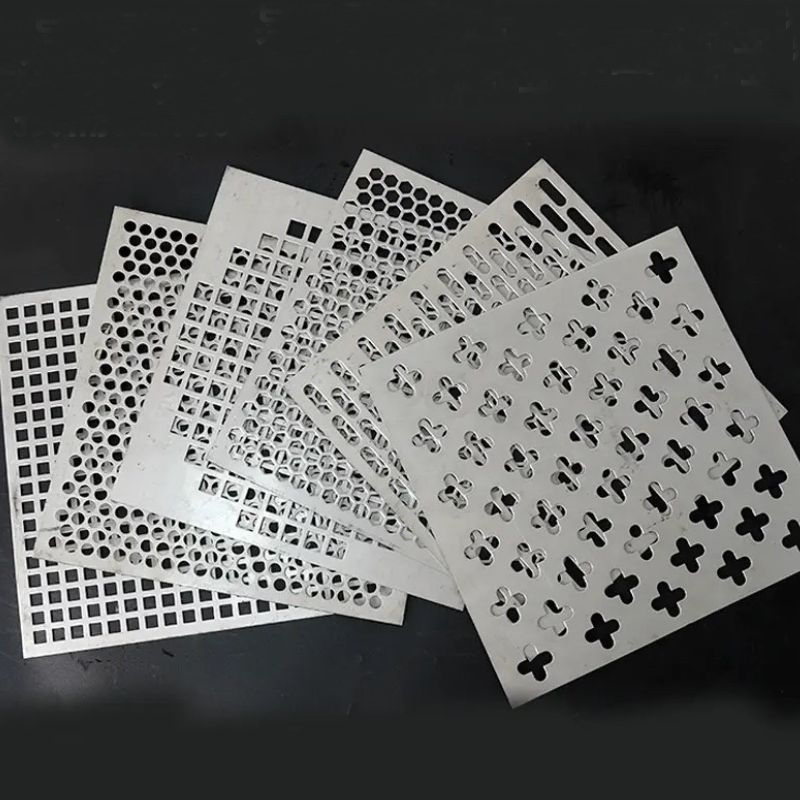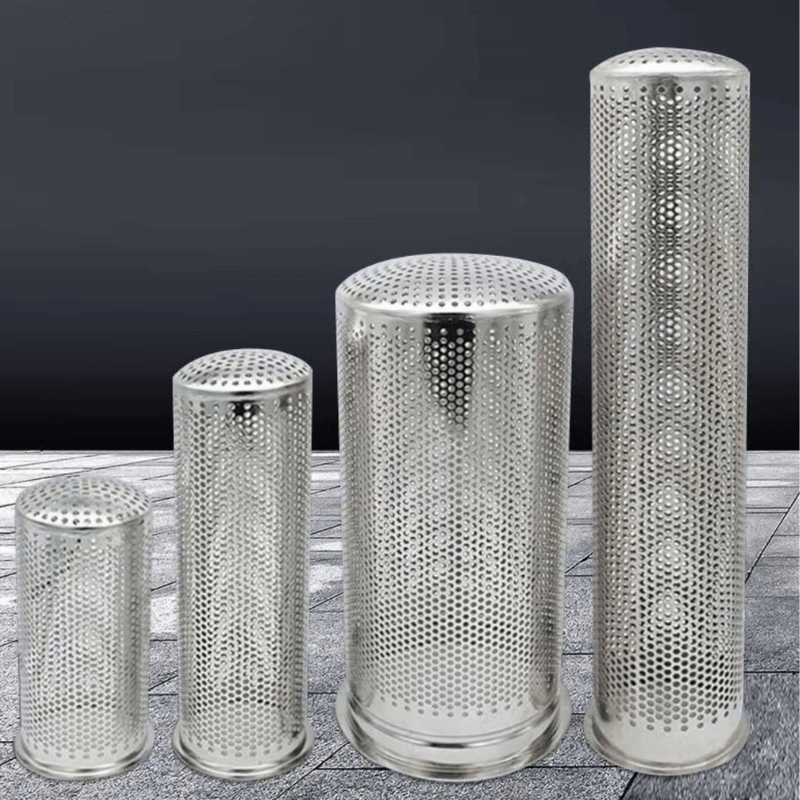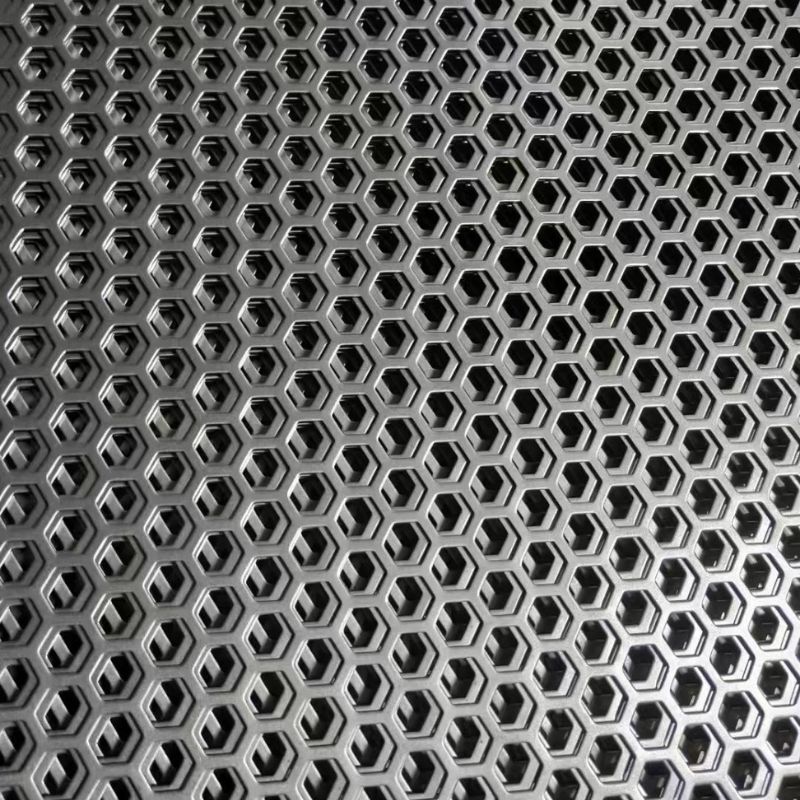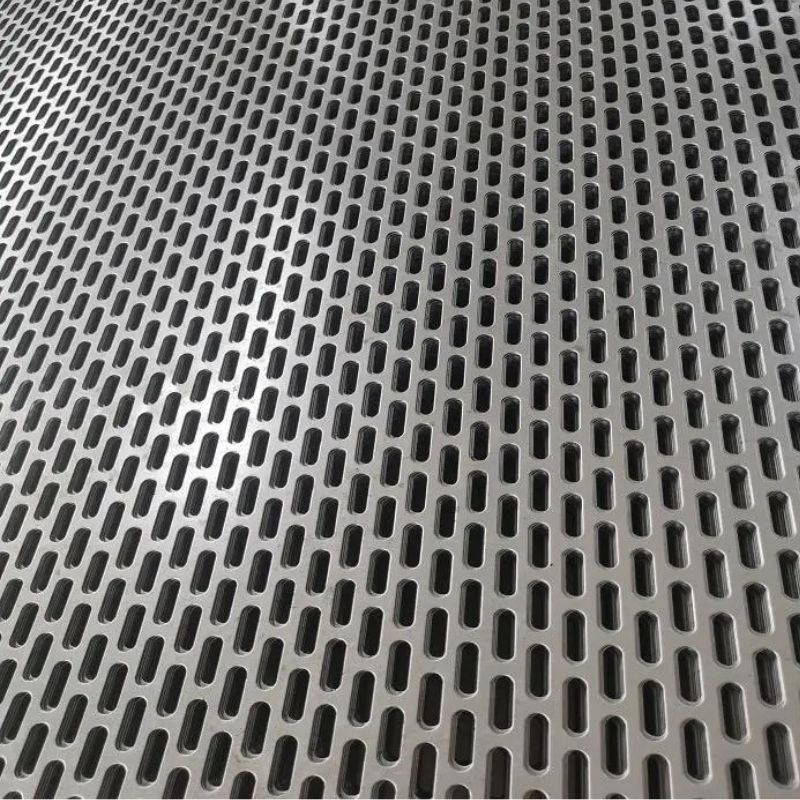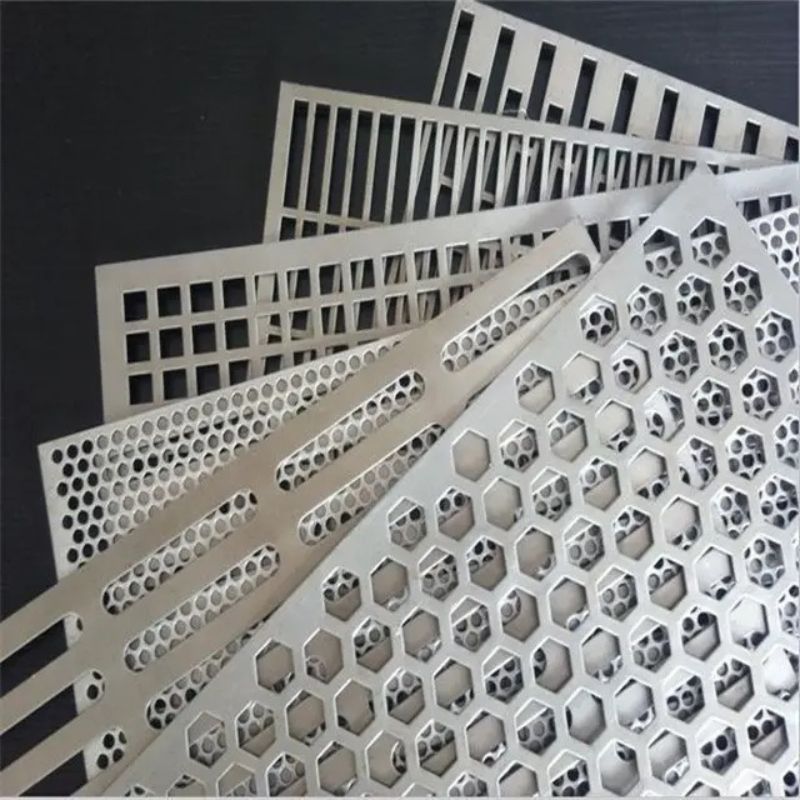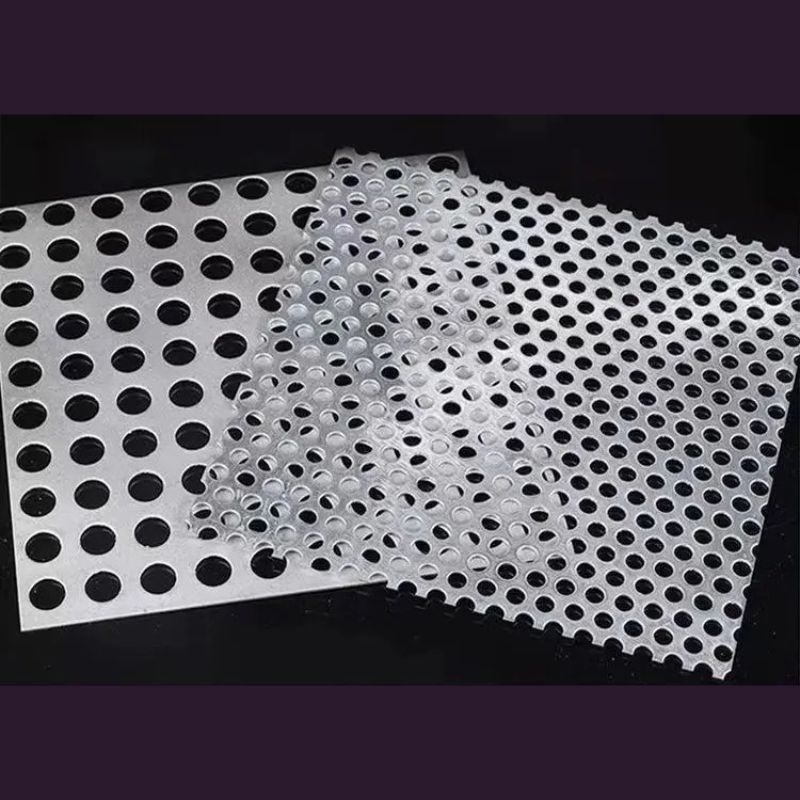Что такое перфорированная металлическая сетка?
Перфорированная металлическая сетка относится к листам металла, которые были механически или вручную пробитые отверстия или узоры для создания сетчатой структуры. Она сочетает в себе долговечность и прочность цельного металла с гибкость и функциональность сетки. Доступно в различных материалах, таких как нержавеющая сталь, оцинкованная сталь, алюминий, медь и латуньПерфорированная металлическая сетка является важнейшим компонентом в промышленном, архитектурном и коммерческом секторах.
Почему стоит выбрать перфорированную металлическую сетку?
1. Непревзойденная сила и долголетие
В отличие от тканевой или пластиковой сетки, Перфорированная металлическая сетка предназначена для выдерживания интенсивного износа, экстремальных температур и воздействия окружающей среды.. Он устойчив к коррозии, ударам и деформации, обеспечивая долгосрочная структурная целостность.
2. Точный контроль потока воздуха и света
Перфорация в металлической сетке позволяет контролируемая циркуляция воздуха, отвод воды и фильтрация света. Это делает его идеальным для системы вентиляции, солнцезащитные устройства и звукопоглощающие панели.
3. Функциональная и эстетическая привлекательность
С различные размеры, формы и узоры отверстий, перфорированную сетку можно адаптировать для смешивания функциональность с современным дизайном. Он часто используется в архитектурные фасады, элементы дизайна интерьера и художественные инсталляции, придавая элегантный современный вид.
4. Экологически устойчивый
Сделано из полностью перерабатываемые металлы, перфорированная металлическая сетка способствует экологически чистые методы строительства и производства. Он поддерживает сертификация LEED и другие стандарты зеленого строительства.
Основные области применения перфорированной металлической сетки
1. Архитектурное проектирование и фасады зданий
Перфорированная металлическая сетка пользуется популярностью в современной архитектуре благодаря своей способности баланс эстетики и функциональности. Приложения включают в себя:
-
Солнцезащитные навесы и жалюзи
-
Декоративные фасады и облицовка
-
Потолки и перегородки
-
Акустические панели
Он обеспечивает тепловая эффективность, конфиденциальность и яркая архитектурная индивидуальность.
2. Промышленное и механическое использование
Отрасли промышленности используют перфорированную металлическую сетку для своих целей. устойчивость и адаптивность. Распространенные области применения:
-
Защитные ограждения и кожухи для машин
-
Системы фильтрации воздуха и жидкости
-
Акустические шумоизолирующие барьеры
-
Операции просеивания и сортировки
Его высокое соотношение прочности к весу позволяет ему работать в условиях сложные условия эксплуатации.
3. Приложения для обеспечения безопасности
Перфорированная сетка служит эффективным защитный барьер в:
-
Ограждения и ворота
-
Оконные сетки и двери
-
Лестничные ограждения и перила
Он предлагает улучшенная видимость и воздушный поток без ущерба для безопасности.
4. Автомобили и транспорт
В автомобильной технике, легкая и устойчивая к коррозии перфорированная металлическая сетка улучшает как производительность, так и эстетику:
-
Решетки радиатора
-
Тепловые экраны
-
Вентиляционные панели
-
Крышки динамиков
Его использование поддерживает снижение веса транспортного средства и терморегуляция.
5. Сельскохозяйственная и пищевая промышленность
Перфорированная структура позволяет легкая очистка и устойчивость к накоплению бактерий, что имеет важное значение в таких пищевых приложениях, как:
-
Сушильные стеллажи
-
Сортировка и мойка лотков
-
Фильтры для зерна и семян
В таких условиях особенно предпочтительна сетка из нержавеющей стали.
Типы перфорации в металлической сетке
1. Круглые отверстия
Круглые отверстия Наиболее распространены и эффективны для оптимизации открытых пространств. Подходит для:
-
Вентиляция
-
Скрининг
-
Декоративные цели
2. Квадратные отверстия
Квадратные перфорации обеспечивают чистый, геометрический вид и идеально подходят для:
-
Розничные дисплеи
-
Фехтование
-
Архитектурные приложения
3. Продолговатые и прямоугольные отверстия
Прорезные отверстия позволяют направленный поток материалов Например, при просеивании или сливе. Они полезны для:
-
Промышленная переработка
-
Операции сушки
4. Шестиугольные и индивидуальные узоры
Эти модели улучшают визуальная привлекательность при сохранении прочности и воздухопроницаемости. Они широко используются в:
-
Архитектурная облицовка
-
Индивидуальный дизайн интерьера
Доступные материалы для перфорированной металлической сетки
1. Нержавеющая сталь
Высокая устойчивость к коррозия, тепло и химикаты, идеально подходит для:
-
Гигиеническая среда
-
Морские и прибрежные применения
-
Медицинское и пищевое применение
2. Оцинкованная сталь
Предложения защита от ржавчины по доступной цене. Отлично подходит для:
-
Наружные установки
-
Ограждения и ограждения
3. Алюминий
Легкая, но прочная алюминиевая сетка идеально подходит для:
-
Потолки и декоративные панели
-
Системы вентиляции
Он также обладает естественной устойчивостью к коррозии.
4. Латунь и медь
Они предлагают декоративная отделка и антимикробные свойства, что делает их подходящими для:
-
Акценты интерьера
-
Элитные торговые площади
-
Общественные здания
Варианты изготовления на заказ
Для удовлетворения различных потребностей производители предлагают индивидуальные услуги перфорации и отделки, включая:
-
Индивидуальные размеры отверстий, формы и расстояния
-
Панели, вырезанные по размеру
-
Фальцовка, сварка и обработка поверхностей
-
Порошковое покрытие или анодирование
Эти параметры настройки позволяют клиентам достичь как технических, так и дизайнерских целей эффективно.
Преимущества перед альтернативными материалами
-
Более высокая прочность, чем у пластиковой сетки
-
Лучшая устойчивость к огню и погодным условиям
-
Превосходная несущая способность
-
Полностью пригоден для вторичной переработки и не требует особого ухода
Это делает перфорированная металлическая сетка — более экологичный и экономичный выбор в долгосрочной перспективе.
Факторы, которые следует учитывать перед покупкой
При выборе перфорированной металлической сетки оцените:
-
Тип материала на основе воздействия окружающей среды
-
Расположение и размер отверстий в соответствии с потребностями в потоке воздуха или фильтрации
-
Толщина и вес листа для структурных требований
-
Процент открытой площади для видимости или пропускания света
-
Чистота поверхности для соответствия эстетическим требованиям или требованиям коррозионной стойкости
Всегда приобретайте продукцию у проверенных поставщиков, чтобы гарантировать точность изготовления и стабильное качество.
Заключение
Перфорированная металлическая сетка — это высокопроизводительный, многофункциональный материал, который служит широкому спектру целей — от архитектурное проектирование для промышленной фильтрации. С безграничные возможности настройки и исключительная долговечность, он по-прежнему остается лучшим выбором для инженеров, архитекторов и производителей.

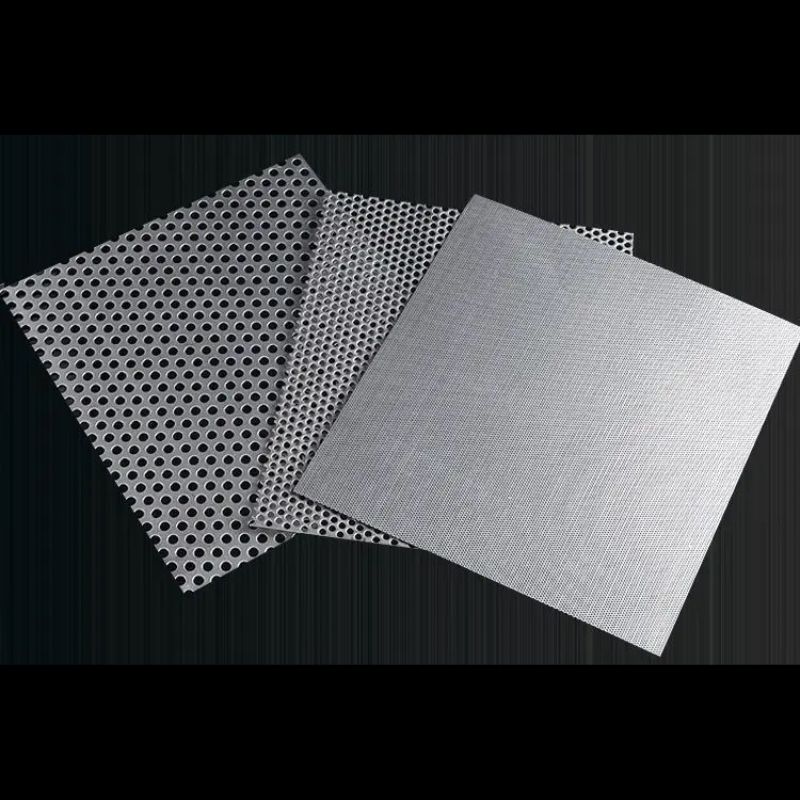
 casssia@yoyimachinery.com
casssia@yoyimachinery.com 